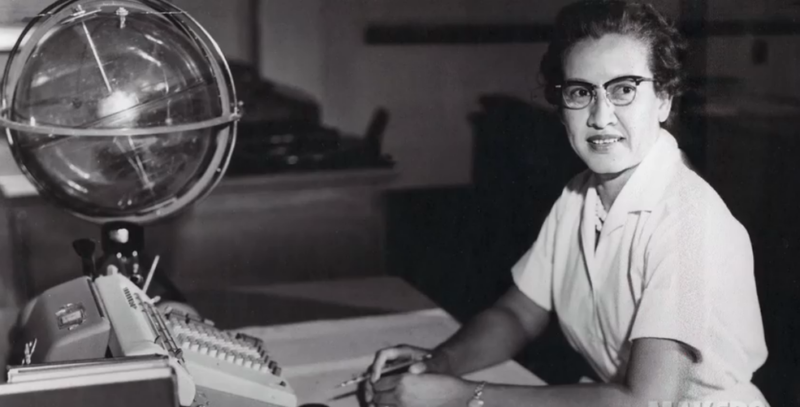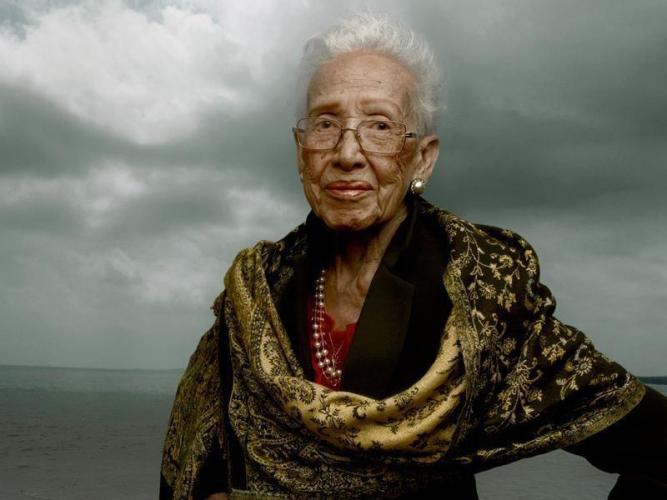
Photo of Katherine Johnson, NASA.
On February 24, 2020, Katherine Johnson passed away at age 101. In 1961, Johnson calculated the flight path for America's first astronaut launched into space. She and her colleagues inspired Margot Lee Shetterly's book, Hidden Figures, and the movie of the same name.
Johnson was one of the first African American graduate students at West Virginia University. In 1953, she started work at NASA's precursor, the National Advisory Committee for Aeronautics. Johnson joined West Computing, a segregated unit of African American women "computers" (then a job title). Computers did mathematical calculations for aerodynamicists so that they could focus on science. Johnson was responsible for key calculations that helped ensure the success of NASA programs, including the Mercury, Gemini, and Apollo projects.
For her computations on America's first human spaceflight project, Freedom 7, Johnson became the first African American woman computer to have her name on a technical paper issued by NASA's Langley Research Center. In 2015, President Barack Obama awarded Johnson the Presidential Medal of Freedom.

Margaret Weitekamp, curator and chair of the Space History Department at the Smithsonian's National Air and Space Museum, spoke with Smithsonian magazine about Johnson's legacy. She said, "Even with all the restrictions and biases against recognizing her potential to contribute to the mission, that she became invaluable...One has to wonder how much more she might have been able to achieve if the path to becoming an aerospace engineer had really been open to her ... instead of being in a support role."
Johnson's work—the math that sent astronauts to the moon—and her outstanding achievements despite racism and sexism will continue to inspire generations to come. We are proud to share Johnson's work, and the work of other women computers, at the Smithsonian. You can see Hidden Figures author Margot Lee Shetterly and NASA mathematician Christine Darden share history of women working at NASA at a 2019 event at the National Air and Space Museum. It's one of many ways we will honor Johnson and her colleagues, and explore the history of women in STEM.
Read more about Johnson in this blog post from our National Air and Space Museum, and about tools similar to those likely used by computers at NASA from our National Museum of American History.